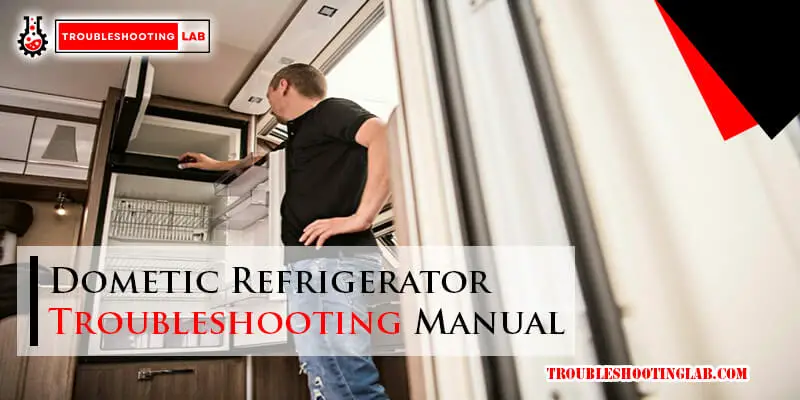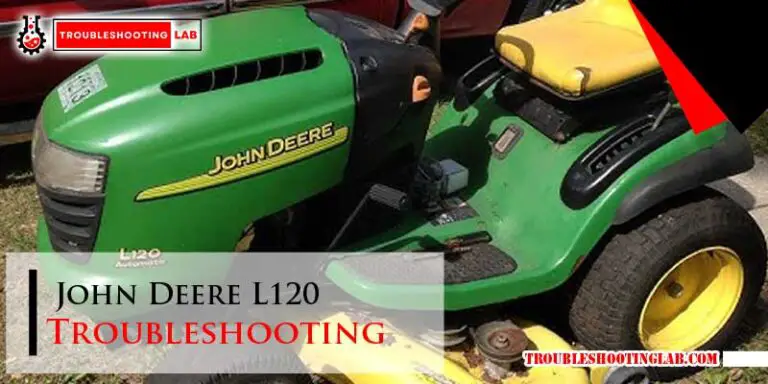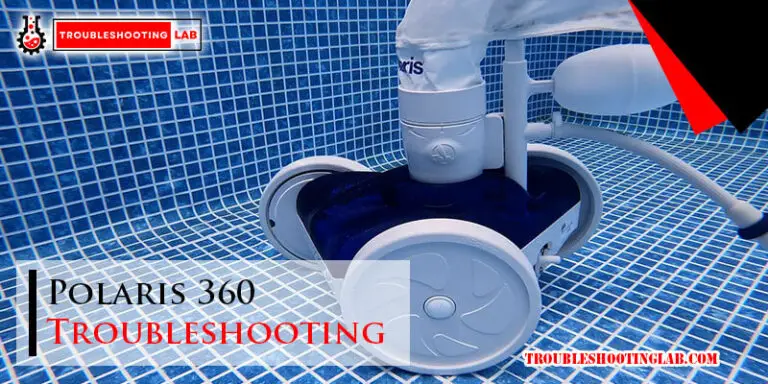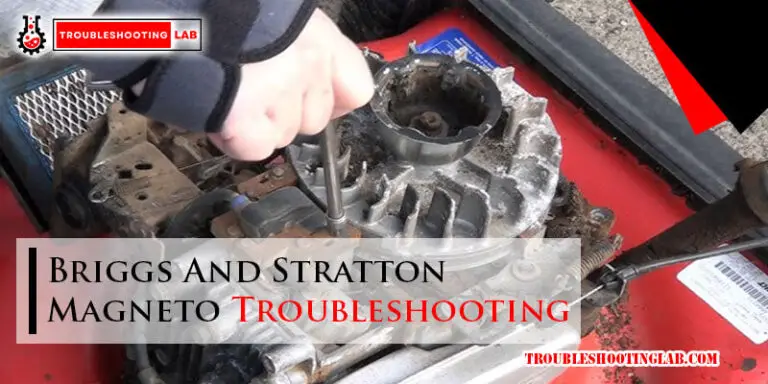Dometic Refrigerator Troubleshooting Manual: Expert Tips
The Dometic Refrigerator Troubleshooting Manual provides step-by-step instructions to diagnose and fix issues with your Dometic refrigerator. From not cooling enough to not turning on, this comprehensive manual covers a wide range of common problems and solutions.
With detailed explanations and diagrams, this manual ensures that you can troubleshoot your refrigerator effectively and get it back to optimal working condition. It also includes important safety guidelines and tips for proper installation and maintenance. Whether you are an RV owner or a service technician, this manual is a valuable resource to ensure the smooth operation of your Dometic refrigerator.
Understanding The Dometic Refrigerator Operation
How Does a Dometic Refrigerator Work?
A Dometic refrigerator is an essential appliance for RV owners, providing a convenient way to store perishable food items while on the road. Understanding how this refrigerator works can help you troubleshoot any issues that may arise.
A Dometic refrigerator operates on the principle of absorption cooling. It utilizes a combination of heat, ammonia, and hydrogen gas to create a cooling effect. Unlike a traditional compressor-based refrigerator, a Dometic refrigerator does not rely on moving parts to cool its contents.
To initiate the cooling process, a small amount of ammonia is heated in the boiler compartment. As the ammonia vaporizes, it rises to the condenser section, where it releases heat and turns into a liquid. This liquid ammonia then flows down to the evaporator section, where it mixes with hydrogen gas and evaporates, absorbing heat from the refrigerator’s interior and creating a cooling effect. The process repeats itself continuously to maintain a consistent temperature inside the refrigerator.
Components Of A Dometic Refrigerator
A Dometic refrigerator consists of several key components that work together to keep your food cool and fresh. These components include:
| Component | Function |
|---|---|
| Boiler | Heats ammonia to initiate the cooling process. |
| Condenser | Converts the ammonia gas back into a liquid by releasing heat. |
| Evaporator | Allows the liquid ammonia to evaporate, absorbing heat from the refrigerator’s interior. |
| Hydrogen Gas | Mixes with the liquid ammonia in the evaporator, helping it to evaporate. |
| Thermostat | Controls the temperature inside the refrigerator by regulating the heat input. |
Common Issues To Look Out For
While Dometic refrigerators are known for their reliability, there are a few common issues that you may encounter. Being aware of these issues can help you troubleshoot and resolve any problems effectively. Some common issues include:
- Inadequate cooling: If your refrigerator is not cooling adequately, there may be a problem with the condenser, evaporator, or thermostat.
- Frost buildup: Excessive frost buildup inside the refrigerator can indicate an issue with the defrost system or a faulty door seal.
- Gas or electrical issues: If your refrigerator is not operating on gas or electric power, there may be a problem with the gas valves, electrical connections, or control board.
- Noisy operation: Unusual noises, such as rattling or hissing sounds, can indicate problems with the cooling system components.
If you experience any of these issues or other problems with your Dometic refrigerator, consulting the Dometic Refrigerator Troubleshooting Manual can guide you on how to troubleshoot and resolve the problem effectively.
Dometic Refrigerator Troubleshooting For Common Problems

Dometic Refrigerator Not Cooling Properly
If you’ve noticed that your Dometic refrigerator is not cooling as it should, there are a few potential issues to consider. One common problem is overloading the unit. When the fridge is packed with too many items, air circulation is hindered, resulting in uneven cooling and potential spoilage. To ensure optimal cooling, make sure not to overload your refrigerator and keep colder items towards the back.
Another possible cause of inadequate cooling is faulty temperature control. If the temperature control is not set properly or is malfunctioning, it can cause the fridge to not cool efficiently. Check the temperature settings and adjust them accordingly to see if it makes a difference.
Additionally, a dirty condenser coil can impede the cooling process. Over time, dust and dirt can accumulate on the condenser coil, reducing its ability to dissipate heat effectively. Regularly cleaning the condenser coil can help improve the cooling performance of your Dometic refrigerator.
Dometic Refrigerator Not Turning On
If your Dometic refrigerator is not turning on, there are a few troubleshooting steps you can take. First, check the power source. Make sure that the refrigerator is securely plugged into a working electrical outlet. If it is connected to a power source but still not turning on, try resetting the circuit breaker or replacing the fuse.
Another possible cause of the refrigerator not turning on is a faulty power cord. Inspect the power cord for any visible damage or fraying. If there are any signs of damage, it may be necessary to replace the power cord.
If none of these solutions resolve the issue, there may be a problem with the refrigerator’s control board. In this case, it is recommended to contact a professional technician or refer to the Dometic Refrigerator Troubleshooting Manual for further assistance.
Dometic Refrigerator Electric Issues
Electric issues can be a common occurrence in Dometic refrigerators. One of the most common electric issues is a blown fuse. If the refrigerator suddenly stops working and all other electrical components in your RV are functioning properly, the fuse may have blown. Locate the fuse panel and check for any blown fuses related to the refrigerator. Replace the blown fuse with a new one of the same amperage.
Another potential electric issue is a faulty thermostat. If the thermostat is not functioning correctly, it can affect the refrigerator’s cooling performance. Test the thermostat to ensure it is working properly. If necessary, replace the thermostat with a new one.
In some cases, the electric heating element may be faulty, which can impact the refrigerator’s ability to maintain a proper temperature. If the unit is not heating properly, it may be necessary to replace the heating element. Consult the Dometic Refrigerator Troubleshooting Manual or seek professional assistance for further guidance.
Dometic Refrigerator Maintenance And Care Tips
Keeping your Dometic refrigerator in top shape requires regular maintenance and proper care. By following these simple tips, you can enhance the longevity and efficiency of your refrigerator, ensuring that it keeps your food fresh and chilled for years to come.
`Cleaning and Preventing Odors`
Maintaining a clean refrigerator not only helps prevent unpleasant odors but also improves the overall performance of your Dometic refrigerator. Here’s what you need to do for effective cleaning:
- Start by unplugging the refrigerator from its power source to ensure your safety.
- Remove all the items stored inside and place them in a cooler or another refrigeration device to keep them fresh.
- Mix a solution of mild dish soap and warm water in a bucket or sink. Use this solution to wipe down the interior of the refrigerator, including the shelves, drawers, and door compartments.
- Rinse the surfaces with clean water, and dry them thoroughly with a soft cloth.
- Next, remove any stubborn stains or spills using a mixture of baking soda and water. Apply the paste to the affected area, let it sit for a few minutes, and then scrub gently with a soft brush.
- To prevent odors, place an open box of baking soda on one of the shelves. Baking soda acts as a natural deodorizer, effectively absorbing any unwanted smells.
- Finally, remember to clean the exterior of the refrigerator with a damp cloth and mild detergent. Wipe it dry to prevent water streaks.
`Proper Temperature Settings And Adjustments`
One crucial aspect of refrigerator maintenance is ensuring that it operates at the correct temperature. Improper temperature settings can lead to food spoilage or freezing. Follow these steps to set the optimal temperature:
- Start by referring to the manufacturer’s guidelines or the Dometic refrigerator manual to determine the recommended temperature settings.
- Locate the temperature control dial, usually located inside the refrigerator compartment or on the control panel.
- Turn the dial to the recommended temperature range, usually between 36 and 40 degrees Fahrenheit for the refrigerator compartment and 0 and 5 degrees Fahrenheit for the freezer compartment.
- Allow the refrigerator to stabilize for a few hours, and then use a digital thermometer to check the temperature. Adjust the settings if necessary.
- Monitor the temperature regularly and make adjustments as needed, especially during seasonal changes or when you notice a significant change in the refrigerator’s performance.
- Remember to keep the refrigerator doors closed as much as possible to maintain a consistent temperature inside.
`Regular Inspections And Servicing`
Regular inspections and servicing are vital to identify any potential issues and address them before they become major problems. Here are some essential steps to follow:
- Inspect the door seals regularly for any signs of damage or wear. Damaged door seals can cause air leakage, affecting the refrigerator’s efficiency. Replace the seals if necessary.
- Clean the condenser coils at least once every six months. Dust and debris can accumulate on the coils, hindering the refrigerator’s cooling capabilities. Use a soft brush or vacuum cleaner to remove the buildup.
- Check for any water leaks or drainage issues. Clean the drain tube and remove any blockages to prevent water accumulation.
- If you notice any peculiar sounds, unusual odors, or a decline in performance, contact a professional technician for a thorough inspection and servicing.
- Consider scheduling regular maintenance appointments with a qualified technician to ensure your Dometic refrigerator receives professional care and remains in optimal condition.
Maintaining your Dometic refrigerator doesn’t have to be complicated. By following these maintenance and care tips, you can prolong its lifespan, avoid costly repairs, and enjoy consistently chilled and fresh food.
Advanced Techniques For Fixing Dometic Refrigerator Issues
Dealing with a malfunctioning Dometic refrigerator can be frustrating, especially if you don’t know where to start troubleshooting. In this section, we will explore some advanced techniques that can help you fix common Dometic refrigerator issues. Whether you need to reset your refrigerator, troubleshoot specific error codes, or replace faulty parts, we’ve got you covered.
Resetting The Dometic Refrigerator
If your Dometic refrigerator seems to be acting up or not functioning properly, resetting it can often solve the issue. Follow these steps to perform a reset:
- Start by turning off the refrigerator and disconnecting it from the power source.
- Wait for at least five minutes to ensure that all residual power is drained from the unit.
- After the waiting period, reconnect the refrigerator to the power source.
- Turn on the refrigerator and check if the issue has been resolved.
Performing a reset can help in cases where the refrigerator is frozen, not cooling enough, or displaying error codes. However, if the problem persists, further troubleshooting may be needed.
Troubleshooting Specific Error Codes
Dometic refrigerators often display error codes to indicate specific issues. Here are some common error codes and their troubleshooting steps:
| Error Code | Troubleshooting Steps |
|---|---|
| E1 | Check the power supply and ensure the refrigerator is receiving adequate voltage. |
| E2 | Inspect the wiring connections and ensure they are secure and properly connected. |
| E3 | Clean the condenser coils and ensure they are free from dirt and debris. |
| E4 | Check the gas supply and ensure it is properly connected and turned on. |
By troubleshooting specific error codes, you can pinpoint the root cause of the issue and take appropriate action to resolve it. If the error code you are experiencing is not listed above, consult the Dometic Refrigerator Troubleshooting Manual or seek professional assistance.
Replacing Faulty Parts
If all else fails and your Dometic refrigerator is still not functioning correctly, it may be necessary to replace faulty parts. Common components that could cause issues include the thermistor, door seal, control board, and cooling unit.
To replace a faulty part:
- Identify the specific part that needs to be replaced.
- Order a replacement part from a reliable supplier or directly from Dometic.
- Follow the manufacturer’s instructions or consult the Dometic Refrigerator Troubleshooting Manual for detailed installation steps.
- Once the new part is installed, test the refrigerator to ensure it is functioning correctly.
By replacing faulty parts, you can restore your Dometic refrigerator to optimum performance and prolong its lifespan.
Remember, troubleshooting and fixing Dometic refrigerator issues can sometimes be complex, and it’s always a good idea to consult the Dometic Refrigerator Troubleshooting Manual or seek professional assistance if needed. With the advanced techniques outlined in this section, you can overcome common problems and keep your Dometic refrigerator running smoothly.
Frequently Asked Questions
Where Is The Reset Button On A Dometic Refrigerator?
The reset button on a Dometic refrigerator is located [provide a specific location]. Press the reset button to restore the refrigerator to its default settings. For more information, refer to the Dometic refrigerator troubleshooting manual or watch a tutorial video on YouTube.
Why Is My Dometic Fridge On But Not Cold?
If your Dometic fridge is on but not cold, it may be due to overloading. Too many items can prevent air circulation, leading to uneven cooling. Make sure you don’t put too much food inside and keep colder items towards the back.
Why won’t my RV fridge run on electricity?
The RV fridge may not run on electricity if it is overloaded with items or if there is an issue with air circulation. Make sure not to put too much food inside, and keep colder items towards the back.
Why Won’t My Dometic Fridge Turn On?
If your Dometic fridge won’t turn on, check that all the manual gas valves are in the ON position. Also, make sure not to overload the unit with too much food, as it can affect proper air circulation and cause uneven cooling.
If the issue persists, refer to the Dometic Refrigerator Troubleshooting Manual or contact a professional for assistance.
Why Is My Dometic Refrigerator Not Cooling Properly?
When your Dometic fridge is not cold enough, it could be due to overloading or improper airflow. Make sure to evenly distribute the items and check the airflow to ensure proper cooling.
Conclusion
Troubleshooting your Dometic refrigerator doesn’t have to be a daunting task. By following the steps outlined in this manual, you can easily diagnose and resolve common issues, such as a fridge not cooling or not turning on. Remember to check for overloaded units and ensure proper ventilation to prevent uneven cooling and potential spoilage.
With the help of this guide, you’ll be able to keep your Dometic fridge running smoothly and efficiently.







i have diagnosed and repaired the entire 12 volt and 120 volt side of a rv dometic electric/gas refrigerator. It passes all tests electrically yet still no cold air in freezer or fridge. RV is level.No detectable smells or visual problems anywhere. i am a certified hvac/r tec. And i am stumped!
Hello,
Thank you for your detailed explanation and for sharing your expertise as a certified HVAC/R technician. Based on your description, it seems that you’ve already checked the basic electrical and gas systems thoroughly. However, there might still be some other factors contributing to the cooling issue.
Here are a few additional troubleshooting steps and tips you can consider:
As you mentioned, the RV is level, which is great, but don’t forget to double-check the ventilation around the refrigerator to ensure there are no obstructions in the external vents that might be affecting performance.
If all of the above components are functioning well, you might want to explore our Dometic Refrigerator Troubleshooting Guide for further steps on resetting the fridge and addressing advanced issues, including specific error codes and part replacements.
Hope this helps! If you continue to face issues, feel free to provide more details, and we’ll be happy to assist you further.
Hello,
Thank you for your detailed explanation and for sharing your expertise as a certified HVAC/R technician. Based on your description, it seems that you’ve already checked the basic electrical and gas systems thoroughly. However, there might still be some other factors contributing to the cooling issue.
Here are a few additional troubleshooting steps and tips you can consider:
As you mentioned, the RV is level, which is great, but don’t forget to double-check the ventilation around the refrigerator to ensure there are no obstructions in the external vents that might be affecting performance.
If all of the above components are functioning well, you might want to explore our Dometic Refrigerator Troubleshooting Guide for further steps on resetting the fridge and addressing advanced issues, including specific error codes and part replacements.
Hope this helps! If you continue to face issues, feel free to provide more details, and we’ll be happy to assist you further.